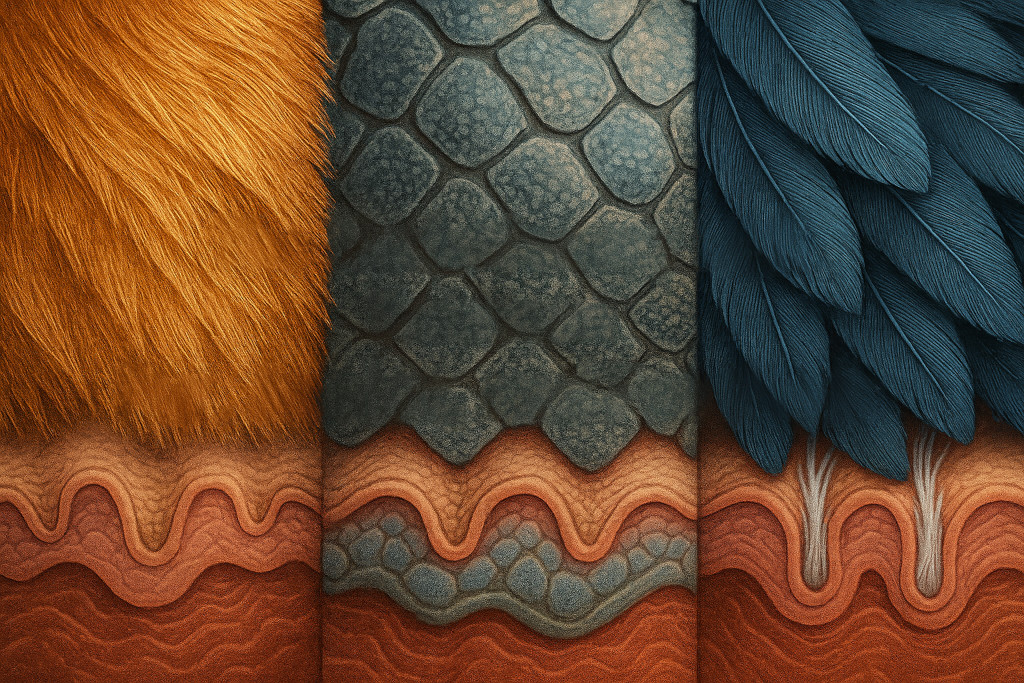At first glance, it feels impossible: A lion’s flowing mane and a crocodile’s armored tail couldn’t be more different. One is warm, fluffy, and soft. The other is cold, hard, and rugged. So when scientists say that fur and scales are actually related… it sounds like a stretch.
But it’s not. In fact, it’s one of the coolest examples of hidden evolutionary connections—and it all starts deep in the skin, long before birth.
A surprising connection hiding under your skin
It turns out that the roots of fur, scales, and even feathers share the same secret origin story. That story begins in our embryonic skin, in tiny structures called placodes.
Placodes are small, thickened patches of skin where future body coverings—like hair or scales—start forming. What’s crazy is that whether you’re developing a feather, a scale, or a strand of hair… it begins the same way. Same signals. Same structures. Same genetic instructions.
This isn’t a guess—it’s backed by developmental biology, fossil discoveries, and genetic experiments. And here’s why that matters.
Solving a centuries-old mystery
For years, biologists weren’t sure how to classify things like hair and feathers. Were they completely separate inventions of evolution? Or did they evolve from a shared ancestor?
Thanks to breakthroughs in genomics and ancient fossils, we now know that:
- Reptilian scales, bird feathers, and mammal hair all come from placodes.
- These placodes activate the same genetic toolkits across species—like BMP and Shh (Sonic hedgehog!) signaling pathways.
- Fossils from hundreds of millions of years ago show primitive amniotes (early land vertebrates) already had scaly skin—meaning these appendages began well before mammals or birds ever existed.
But wait… can you actually turn one into another?
Yes. And scientists have done it.
In a stunning genetic experiment, researchers manipulated chicken embryos and triggered certain gene expressions that caused scales on the legs to grow like primitive feathers. This experiment showed that, with just a few tweaks, one appendage can morph into another—because the underlying “blueprint” is shared.
What this tells us about our deep past
This kind of evidence leads evolutionary biologists to a simple but powerful conclusion: scales, feathers, and hair are homologous structures. That means they all evolved from the same ancestral feature—most likely the scales of an early reptilian ancestor.
So while mammals, birds, and reptiles may look wildly different today, they’re all carrying ancient echoes in their skin. Your hair? It’s related to a dinosaur’s feathers and a lizard’s scales.
The takeaway
What makes this discovery so profound isn’t just the science—it’s the reminder that nature reuses its best ideas. Whether it’s fur on a fox, feathers on an eagle, or scales on a snake, they all stem from the same evolutionary toolkit.
It’s not that fur and scales evolved separately and coincidentally look like body coverings. They’re actually variations of the same ancient theme, sculpted over millions of years.
So the next time you see a squirrel, a snake, and a songbird in the same park, remember: They’re not as different as they look. Somewhere deep in their DNA, they all share a small, wrinkled, placode-covered past.




Leave a Comment